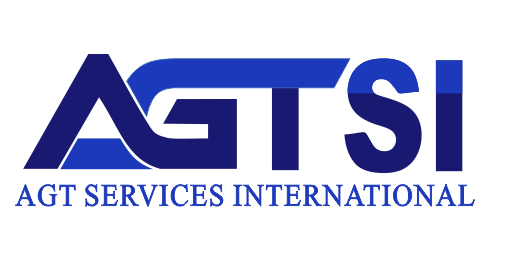Introduction
identifying the best candidates for the job can transform your business. Our comprehensive guide explores effective hiring strategies, from defining ideal candidate profiles to leveraging modern recruitment tools. Learn how to enhance your company’s productivity and success through smart hiring decisions.Hiring the right people is important for any organization’s success. When companies identify and hire the best candidates, it not only fills a position but also sets the stage for enhanced productivity, innovation, and a positive work environment.
1. Defining Job Requirements Clearly
Before starting the hiring process and Identifying the Best Candidates for the Job:, it’s essential to clearly define the job role, responsibilities, and required qualifications. This ensures that everyone involved in hiring understands exactly what the position entails.
- Use specific language in job descriptions to accurately convey the role’s requirements.
- Consult with team members and managers to create a comprehensive list of necessary skills and qualifications.
2. Crafting an Appealing Job Description
A well-written job description attracts suitable candidates who are genuinely interested and qualified for the role. It should be informative yet concise, outlining key responsibilities and opportunities within the organization.
- Highlight the company’s mission, values, and workplace culture to attract candidates who align with these aspects.
- Include details about career growth and development prospects to attract ambitious candidates.
3. Choosing the Right Recruitment Channels
Utilizing appropriate recruitment channels increases the likelihood of reaching qualified candidates. Whether through job boards, social media platforms, or professional networks, choosing the right channels ensures that job openings are visible to the right audience.
- Research which platforms are most effective for reaching your target demographic.
- Consider using niche job boards or industry-specific platforms for specialized roles.
4. Screening and Shortlisting Candidates
Screening res/’ [‘//James and applications efficiently save time and focus attention on the most promising candidates. Establish clear criteria for shortlisting candidates based on their qualifications, experience, and potential cultural fit.
Tip 1: Develop a scoring system to evaluate candidate applications objectively.
Tip 2: Consider using applicant tracking systems (ATS) to streamline the screening process.
5. Conducting Effective Interviews
Interviews provide an opportunity to assess candidates’ skills, experience, and suitability for the role and the organization. Structuring interviews effectively ensures that all necessary aspects are covered.
Tip 1: Prepare a list of standardized questions that assess both technical skills and cultural fit.
Tip 2: Use behavioural interview techniques to gauge how candidates have handled situations in the past.
6. Assessing Cultural Fit
Assessing cultural fit ensures that new hires will integrate well into the existing team and align with the organization’s values and working environment.
Tip 1: Involve team members in the interview process to evaluate cultural fit.
Tip 2: Consider hosting informal meetings or social activities to gauge candidates’ personalities and communication styles.
7. Evaluating Skills and Competencies
Evaluating candidates’ skills goes beyond resumes and interviews. Practical assessments, such as skill tests or work simulations, provide valuable insights into candidates’ abilities to perform job-related tasks.
Tip 1: Tailor assessments to reflect the specific skills required for the role.
Tip 2: Provide candidates with clear instructions and sufficient time to complete assessments.
8. Emphasizing Diversity and Inclusion
Diversity in hiring promotes creativity, innovation, and a broader perspective within the organization. Emphasizing diversity and inclusion ensures that hiring practices are fair and inclusive.
Tip 1: Implement diversity training for hiring managers and team members to mitigate unconscious biases.
Tip 2: Set diversity goals and track progress to foster a diverse and inclusive workplace.
9. Making Data-Driven Decisions
Utilizing data and analytics in the hiring process improves decision-making and enhances recruitment strategies over time. Metrics such as time-to-hire, cost-per-hire, and candidate retention rates provide valuable insights.
Tip 1: Regularly review recruitment data to identify areas for improvement.
Tip 2: Use Feedback from candidates and hiring managers to refine recruitment processes.
10. Onboarding and Integration
Effective onboarding ensures that new hires feel welcome and prepared to contribute from day one. A structured onboarding process facilitates smoother integration into the team and organization.
Tip 1: Provide new hires with access to resources, training, and support needed to succeed.
Tip 2: Assign mentors or buddy systems to help new hires navigate their roles and company culture.
11. Monitoring and Providing Feedback
Continuous feedback loops help improve recruitment processes and enhance candidate experience. Soliciting Feedback from candidates and hiring managers provides valuable insights for refining recruitment strategies.
Tip 1: Request Feedback from candidates on their overall experience during the recruitment process.
Tip 2: Conduct regular reviews of recruitment practices based on Feedback received.
12. Retention Strategies
Hiring the right candidates contributes to employee retention by ensuring a good fit between the individual and the organization. Implementing retention strategies, such as career development opportunities and recognition programs, fosters long-term commitment.
Tip 1: Conduct stay interviews to understand employees’ motivations and concerns.
Tip 2: Provide ongoing training and professional development to support career growth.
13. Measuring Impact and Return on Investment (ROI)
Evaluating the impact of hiring decisions helps quantify the success of recruitment efforts. Metrics such as employee performance, satisfaction, and organizational outcomes provide insights into the ROI of hiring the best candidates.
Tip 1: Compare the performance of new hires with established benchmarks to measure their impact.
Tip 2: Calculate the cost-effectiveness of recruitment efforts by analyzing hiring costs versus benefits.
Final Thoughts:
Summarize the key points discussed in the article and emphasize the long-term benefits of identifying and hiring the best candidates for organizational success. Highlight the importance of continuous improvement in recruitment strategies to adapt to evolving business needs. This outline covers the essential aspects of hiring the best candidates and their impact on organizational success. You can further expand each section with detailed explanations and real-life examples to make your article comprehensive and insightful. Let me know if you need further assistance with any specific section!


















